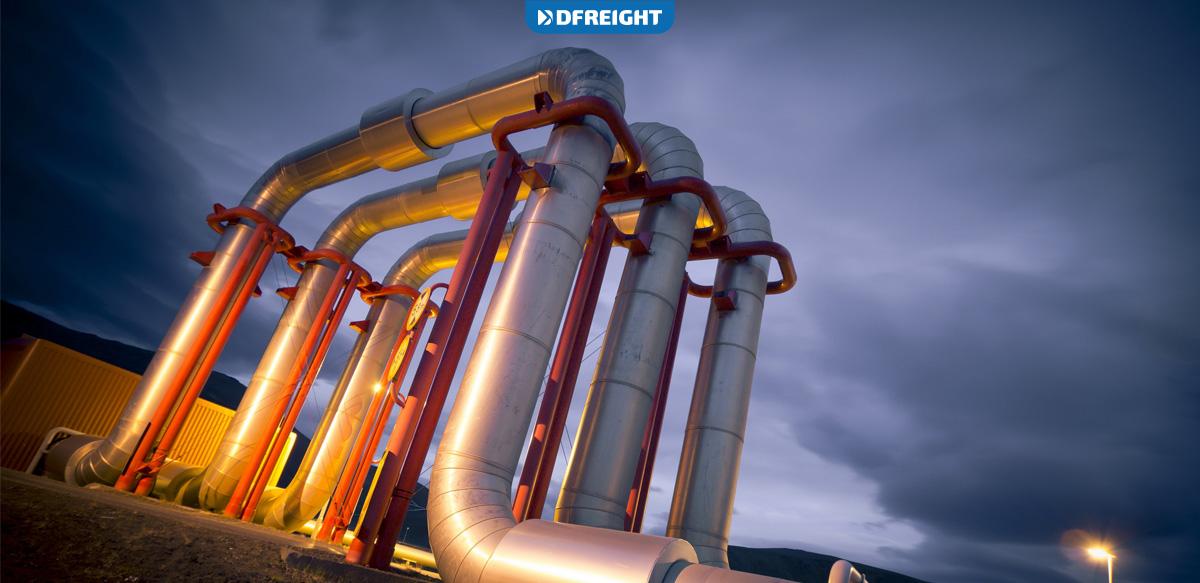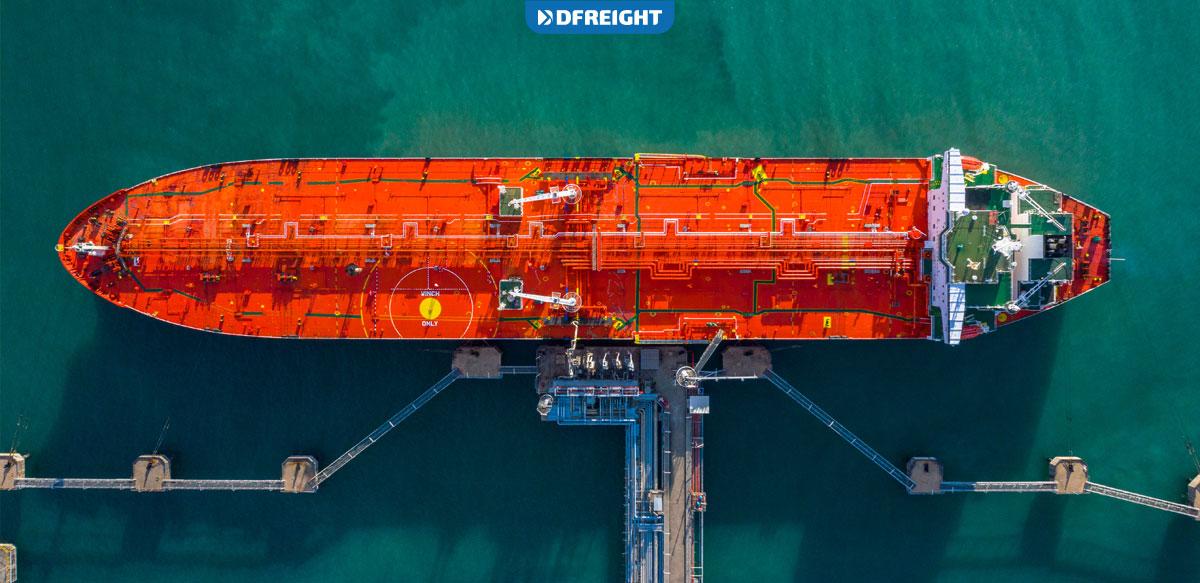Shipping crude oil and natural gas is a complex and dangerous operation. These commodities must be moved safely and efficiently to refineries and other processing plants. This is why it is vital to have a well-trained and experienced workforce handling these operations.
There are many ways to ship crude oil and natural gas, but they all have one thing in common: they must be done carefully. This blog post will provide a comprehensive guide on how to ship these commodities safely.
Table of Contents
The Importance of Shipping Crude Oil and Natural Gas
Exploration and production innovations have enabled it to find and extract crude oil and natural gas from significant reserves worldwide. The demand for products made from petroleum has increased at the same time worldwide. However, demand and supply are rarely concentrated in the same area. Therefore, transportation is essential to ensuring the consistent and affordable flow of petroleum that we all rely on to power our vehicles, heat our homes, and enhance our quality of life.
Crude oil and natural gas are vital to the world economy. They are used to produce a variety of products, including gasoline, plastics, and chemicals. Without these resources, many industries would grind to a halt. However, shipping crude oil and natural gas are complex and dangerous. These products must be moved safely and efficiently to refineries and other processing plants.
Crude oil and natural gas are also significant sources of revenue for many countries. This revenue helps to fund essential programs and services. It also creates jobs and supports local economies. Hence, safe and efficient transportation products are vital to the world economy and the well-being of billions of people worldwide.
There are many ways to ship crude oil and natural gas, but they all have one thing in common: they must be done carefully. Here are various modes of transportation and some tips on how to ship these commodities safely.
Modes of Shipping Crude Oil and Natural Gas
Pipelines, trains, and tankers are tried-and-true methods of tying petroleum supply and demand together. Crude oil is transported from production areas to a loading terminal at a port using supply-end pipelines and trains. Tankers subsequently transport the crude oil to pipelines on the demand side that are connected to the refineries, which turn the raw material into usable products. Liquefied natural gas (LNG) tankers and pipelines are both used to transport natural gas.
1. Oil Tankers
Oil tankers are ships designed to carry large quantities of crude oil and natural gas. They are essential to the global oil and gas industry, transporting these commodities worldwide.
Oil tankers come in various sizes, from small vessels carrying a few thousand barrels of oil to Ultra-Large Crude Carriers (ULCCs) carrying up to 2 million barrels. There are also several specialized oil tankers, such as those designed to carry highly volatile liquids (HVLs) or those that can transport liquefied natural gas (LNG).
The global oil tanker fleet has a capacity of around 5.2 billion barrels, according to the most recent data from the International Energy Agency (IEA). The vast majority of this capacity is carried on tankers larger than 70,000 deadweight tons (DWT).
The use of oil tankers dates back to the early 19th century, when the first crude oil was transported from Pennsylvania to New York City by ship. Today, oil tankers play a vital role in the global economy, transporting crude oil and natural gas from producing regions to markets worldwide.
In 2019, seaborne trade in crude oil and natural gas totaled around 9.4 billion tons, according to the IEA. Of this, approximately 7.4 billion tons were crude oil, and 2.0 billion tons was natural gas.
Most of the world’s crude oil is transported by sea, with tankers carrying around 77% of global crude trade in 2019. The largest crude oil exporters are Saudi Arabia, Russia, and Iraq, while the largest importers are the United States, China, and India.
Natural gas is typically transported by pipeline, but when this is not possible, LNG tankers are used. In 2019, LNG trade totaled around 343 million tons, with Qatar, Australia, and the United States as the largest exporters and China, Japan, and South Korea being the largest importers.
2. Pipelines

Pipelines play a critical role in transportation because most of the oil moves through pipelines for at least part of the route. After the crude oil is separated from natural gas, pipelines transport the oil to another carrier or directly to a refinery. Petroleum products travel from the refinery to market by tanker, truck, railroad tank car, or pipeline.
The United States has about 300,000 miles of natural gas transmission pipelines. Strategic planning involves determining the shortest and most economical routes where pipelines are built, the number of pumping stations and natural gas compression stations along the line, and terminal storage facilities so that oil from almost any field can be shipped to any refinery on demand.
Offshore pipelines carry more risk for leaks and environmental impact than onshore pipelines, but technological advancements in pipeline material and monitoring systems have improved pipeline safety and efficiency. Standards exist for safety in the design and construction of pipelines and are published by organizations such as the International Organization for Standardization (ISO) and the American Petroleum Institute (API).
The Federal Energy Regulatory Commission (FERC) regulates the interstate transportation of natural gas and oil and approves LNG terminals and natural gas pipelines. Before FERC was created in 1977, Interstate Commerce Commission was responsible for regulating oil and gas transportation.
3. Supertankers
Due to their size and draft, ultra-large and massive crude carriers (ULCCs and VLCCs) can only sail specific routes. VLCCs have capacities between 160,000 and 300,000 SDWT, while ULCCs ship with over 300,000 SDWT. Most large crude carriers are chartered from transportation firms experienced in managing such enormous boats rather than owned by oil companies.
4. Barges
Barges mostly move through rivers and coastal and inland waterways, either individually or in groups of two or more. They can be self-propelled or pulled by tugboats. They might provide crude oil to refineries, but more frequently, they serve as a cheap route for moving petroleum products from refineries to distribution terminals. Tankers whose draft or size prevents them from docking are also loaded off with goods using barges.
5. Marine LNG and LPG vessels
Natural gas that has been liquefied is transported in specialized marine vessels with compartments or highly insulated reservoirs. The LNG is unloaded at the delivery port and delivered to storage facilities or regasification plants. Liquefied petroleum gas can be transported in liquid and cryogenic forms in insulated and uninsulated marine vessels and barges. LPG in containers (bottled gas) may also be transported on barges and maritime ships as cargo.
The three categories of maritime vessels that are utilized to move LNG and LPG are:
- Vessels with reservoirs under two mPa of pressure (LPG only)
- Vessels with heat-insulated reservoirs and 0.3 to 0.6 mPa of decreased pressure (LPG only)
- Cryogenic vessels with heat-insulated reservoirs under pressure that is similar to that of the atmosphere (LPG and LNG)
6. Railroad / Tank Trucks

In the past, railroads were the primary mode of transport for oil. Currently, pipelines and railroads are in direct competition. While pipes are typically more expensive, the already-built railroad infrastructure offers a more flexible alternate option when pipelines are at capacity. Tank trucks or railroad tank cars are used to transport a lot of petroleum products from refineries to markets. Gasoline and home heating oil are delivered by tank trucks to petrol stations.
7. Tugboats
The need for more oil has prompted deeper drilling and the placement of larger drilling rigs farther offshore, allowing for the construction of larger and more potent tugs and larger barges.
Tips on How to Ship Crude Oil and Natural Gas Safely
There are many ways to ship crude oil and natural gas, but they all have one thing in common: they must be done carefully. Here are some tips on how to ship these commodities safely:
1. Use the Right Containers
Crude oil and natural gas must be shipped in special containers that can withstand the pressure and heat. Make sure to use the proper containers for the job.
2. Follow the Proper Procedures
Specific procedures must be followed when shipping crude oil and natural gas. Make sure you know what these are and follow them to the letter.
3. Use the Right Shipping Company
Not all shipping companies are created equal. Make sure you choose a company that has experience shipping these commodities.
4. Be Prepared for Emergencies
No matter how careful you are, accidents can happen. That is why it is essential to be prepared for emergencies. Know what to do in case of a spill or leak.
The Final Word
Overall, it is clear that the shipping of crude oil and natural gas is a complex and dangerous operation. However, it is also clear that it is a vital operation to maintain the world economy and the well-being of billions of people worldwide. There are many different ways to ship these commodities, but it is crucial to use suitable containers, follow the proper procedures, and use the right shipping company.
If you need more information on transporting crude oil and natural gas from/to the UAE, look no further than DFreight. Just contact our professional experts to give you a hand and guide you through every step of the way.
FAQs
Why is shipping oil and gas important?
Shipping oil and gas is essential because these commodities are vital to the world economy. They are used to produce a variety of products, including gasoline, plastics, and chemicals. Without these resources, many industries would grind to a halt.
What is an oil tanker?
An oil tanker is a ship designed to carry large quantities of crude oil and natural gas.
What are the different types of oil and gas carriers?
Different types of oil and gas carriers include tankers, pipelines, barges, railway tank cars, and tugboats.
What are some tips on how to ship oil and gas safely?
Some tips on how to ship oil and gas safely include using suitable containers, following the proper procedures, and using the right shipping company.
Who regulates shipping oil and gas worldwide?
The Federal Energy Regulatory Commission (FERC) regulates the interstate transportation of natural gas and oil.














